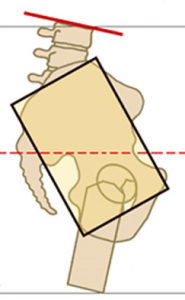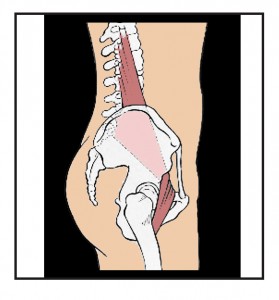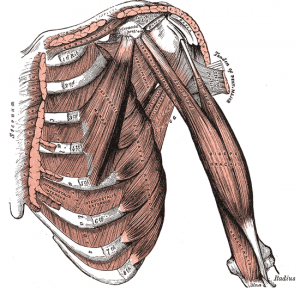Tight pectoralis minor muscles are a problem for a majority of people that I work with.
Pectoralis minor connects the shoulder girdle to the rib cage and acts to draw the shoulder blade forward and down. It tends to become tight and dysfunctional for several reasons.
It would be easy to blame the computer that you hunch over for hours on end as the main culprit, or the vegetables you chop, or the baby you carry… these actions all make it easy to develop a tight pectoralis minor.
But, and there is always the inevitable but, if your pelvis and lumbar curve are correctly aligned you should have adequate support for these functionally necessary postural positions.
When you sit or stand with the pelvis tucked under, or the thighs leaning forward, it throws off the natural curve of the lumbar spine which profoundly influences the pectoralis minor and its partner pectoralis major.
I have written in the past about the relationship of the alignment of the pelvis and the rhomboid muscles of the upper back and this pretty much mines the same territory.
When the pelvis is in the right place, the psoas muscles help the erector muscles of the spine to lengthen, providing support for the usually loose rhomboids to tone.
The same thing happens to the tight pectoralis minor muscle.
The spinal extension facilitated by the pelvis and psoas broadens pectoralis minor. It might resist that broadening differently than the looser more lax rhomboid but with persistence and the right stretches, the tight pectoralis minor muscle will eventually begin to open.
But, and there often is another but, all the bodywork and upper body stretching in the world won’t address the issue of a tight pectoralis minor if you don’t change your posture and realign the lower body as well.
Releasing the psoas is essential to developing a balanced body. This all-important muscle is all too often not on the radar of doctors and practitioners who can’t point to a reason for your pain.
The psoas might be the key that unlocks years of suffering from pain and trauma.



